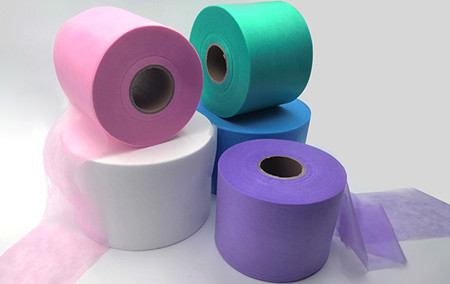How to distinguish spunbond nonwoven fabric and spunmelt nonwoven fabric
Views:1489 Publish Time: 2021-12-13
Non-woven fabrics are divided into spunbonded non-woven fabrics, spunmelt non-woven fabrics, melt-blown non-woven fabrics, spunlace non-woven fabrics, hot air non-woven fabrics, etc. according to the different process methods. It is spunbonded nonwoven fabric, spunmelt nonwoven fabric, meltblown nonwoven fabric. How to distinguish spunmelt nonwoven fabric, spunbonded nonwoven fabric and meltblown fabric from the appearance? Jiangyin Bairuijia Non woven fabric shares non-woven Identification method with you.
(1) Spunbond non-woven fabric
After the polymer has been extruded and stretched to form continuous filaments, the filaments are laid into a web, and the web is then bonded by itself, thermally bonded, chemically bonded or mechanically reinforced to make the web become non-woven Spinning cloth.
(2) Features:
1. The web is composed of continuous filaments.
2. Excellent tensile strength.
3. There are many process changes, and various methods can be used for reinforcement.
4. Wide variation range of filament size.
Identification method:
1. Spunbond non-woven fabric has good gloss, and gradually darkens as the proportion of filler in the woven fabric increases.
2. Spunbond non-woven fabric is soft, comfortable and wear-resistant.
3. After the spunbond non-woven fabric is torn, it is strong, clean and pure, with a lot of silk.
(2) Meltblown non-woven fabric
Spunmelt non-woven fabric is the core material of masks. It is mainly made of polypropylene and its fiber diameter can reach 1 to 5 microns. There are many voids, fluffy structure and good anti-wrinkle ability. The ultra-fine fibers with unique capillary structure increase the number and surface area of fibers per unit area, and have good filtration, shielding, heat insulation and oil absorption.
The process of meltblown non-woven fabric: polymer feeding-melt extrusion-fiber formation-fiber cooling-netting-reinforcement into cloth.
Features:
1. The fiber web is composed of extremely fine shorter fibers.
2. The uniformity of the fiber web is good, and the hand feels soft.
3. Good filtration performance and liquid absorption performance.
4. The fiber web has poor strength.
5.In the manufacturing process of meltblown cloth, the spinneret is thinner than spunbond non-woven fabric.
Identification method:
1. Whether the melt blown cloth can absorb small pieces of paper, because the melt blown cloth has an electrostatic adsorption function.
2. Melt blown cloth will melt in fire and won't burn. You can tear the middle layer of the opening cover and burn it with a lighter. If it does not burn, it is usually melt blown cloth.
3. Tear the melt blown layer into strips, there will be an obvious electrostatic adsorption effect, and the strips of melt blown layer can also be adsorbed on the stainless steel.
4. You can pour a little water on the melt blown cloth, it is better if the water does not leak.
(3)Spunmelt non-woven fabric
Spunmelt nonwoven fabric is a combination of spunbond and meltblown technology, including SMMMSS, SMMSS, SMMS, SMS, etc. In the production of spunmelt nonwoven fabrics, that is, on the same production line, it has both spunbond die and melter. The spray die head fully utilizes the spinning advantages of spunbond and meltblown to produce high-quality composite nonwoven fabrics.
For example: SMS composite non-woven fabric, first spout filaments from the spinneret of the first spunbond die to form the first layer of fiber web, and then form the second layer of ultra-fine short fiber web on it through the melt blown die. , And then through the second spunbond die nozzle to form a third layer of web. After the three layers of web are hot-rolled and bonded and strengthened by a hot rolling machine, they are then wound by a winder, and finally cut to form a finished product. .
Features:
1. Combines the advantages of spunbond and meltblown;
2. Good air permeability and filterability;
3. High resistance to hydrostatic pressure;
4. Soft feel.
Identification method:
1. Comfortable and soft
2. Pour a little water to test it, the spun-melt cloth is more waterproof
